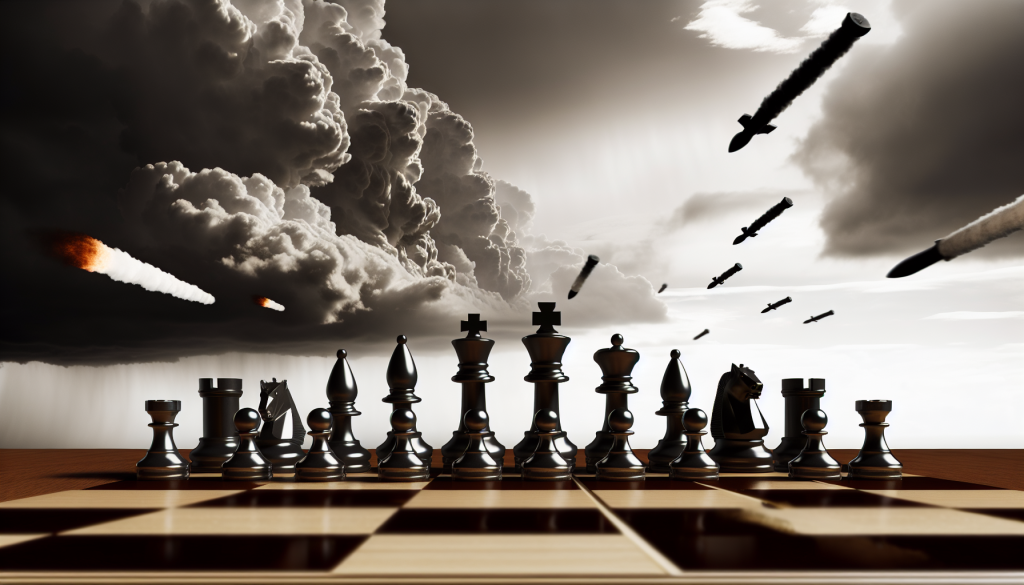Global Tensions: The Growing Fear of World War III
The Current Climate
In recent months, world leaders have increasingly expressed alarm over the geopolitical landscape. Friedrich Merz, Germany’s leader, recently conveyed a dual reality: while he assured reporters in Düsseldorf that Germany is “not at war,” he also acknowledged, “But we are no longer at peace either.” This sentiment echoes a growing unease among Europeans and Americans who view global conflict as a genuine possibility, with surveys indicating many believe a significant war could erupt within the next decade.
Multipronged Conflict
According to Robert Muggah, founder of the Canadian security think tank SecDev, the world is already grappling with a “global war” being waged across various domains, despite it not being formally acknowledged. His assertion suggests the symptoms of an impending large-scale conflict—coupled with the overlapping crises gripping various regions—paint a concerning picture.
In European airspace, airports in Denmark and Poland have faced disruption from drone activity and cyber-attacks, underscoring the real threats that linger. The return of “little green men”—unidentified soldiers associated with Russia—near Estonia raises further alarms. Concurrently, tensions are escalating in the South China Sea, where China’s military maneuvers near Taiwan hint at potential conflict.
Interventions on Multiple Fronts
The United States finds itself entangled in a web of military interventions and diplomatic tensions. The U.S. has struck suspected drug boats off Venezuela’s coast, while President Trump reportedly contemplates land strikes against drug cartels. Compounding these actions, North Korean troops have allegedly been dispatched to Ukraine, and Iran has provided drones, intensifying the conflict’s complexity. Earlier this year, the U.S. engaged in a brief conflict with Iran, underscoring the region’s volatility.
As the specter of war looms, various governments are bolstering their military capabilities. Muggah notes an alarming trend: from the Baltic states to Taiwan, nations are preparing their citizens for potential crises. His forecasting models suggest that the risk of global conflict, including nuclear war, is on the rise.
The Language of War
The language used by leaders is also shifting to reflect this increasingly dangerous climate. In a noteworthy move, Trump has signaled intentions to rebrand the U.S. Department of Defense as the “Department of War.” This change reflects a “history of victory” while hinting at a willingness to adopt a more aggressive military posture. His Secretary of Defense, Pete Hegseth, has indicated that the U.S. will not merely defend but actively pursue military engagement.
Additionally, the military’s strategic positioning has brought attention. Recent deployments of nuclear submarines to vital regions and B-52 bombers over Venezuelan airspace illustrate a readiness to respond to threats with overwhelming force.
Rising Global Conflicts
The global conflict landscape is undeniably complex. The Uppsala Conflict Data Program reports that the number of state-based armed conflicts has increased, catching the world’s attention. As of last year, there were 61 state-based conflicts, with 11 qualifying as wars due to the high number of battle-related deaths.
Analysts indicate that while conflicts have ballooned, the fear of a global war may stem from an erosion of the post-World War II order—a time when negotiations could pacify disputes. There’s a growing trend of conflicts escalating quickly into warfare, often without diplomatic resolution.
Ukraine: A Flashpoint
Among these crises, the war in Ukraine persists as an alarming flashpoint. Muggah emphasizes that while the fighting may appear to have settled into a stalemate, Russia’s escalating cross-border strikes and NATO’s responses heighten the risk of broader conflict. Predictions from markets suggest a tangible chance of a Russia-NATO military clash, with probabilities increasing as geopolitical tensions escalate.
Russia’s perspective adds another layer of complexity; the Kremlin views NATO’s support for Ukraine as an act of aggression, further straining international relations.
Conclusion: A Fragile Balance
As conflicts simmer across the globe, the risk of a new world war looms large in the collective consciousness. Geopolitical tensions, military deployments, and shifts in global alliances suggest that the flames of war could ignite amidst the current disquiet. The unfolding narrative encapsulates a fragile balance, wherein leaders must navigate perilous waters to maintain peace—or risk plunging the world into chaos.

